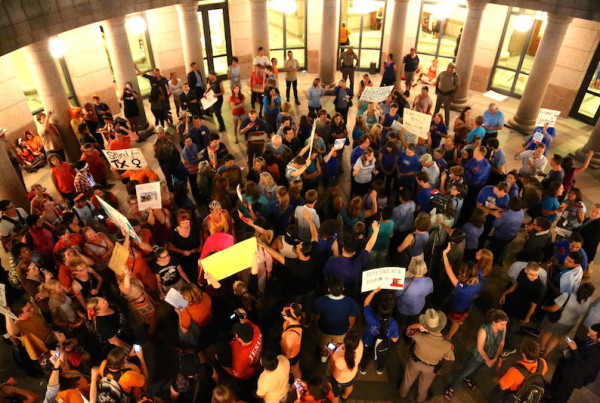This story first appeared on KERA News.
As news of Thomas Eric Duncan’s stay at Texas Health Presbyterian Hospital in Dallas hit the airwaves last fall, emergency room visits plummeted. Thousands of patients went elsewhere.
This didn’t look good to investors. As bondholders speculated about Presbyterian’s ability to stay afloat, Moody’s revised its outlook on the hospital’s debt from “positive” to “developing.”
For the month of October 2014, revenue at Presbyterian declined more than $12 million. In November, revenue was down $8 million.
People didn’t want to go near the “Ebola” hospital.
Dr. Alexandra Dresel is a surgeon with a private practice at the Presbyterian complex. Even though her office, a warm sixth floor suite, isn’t inside the actual hospital, Dresel found herself trying to calm patients down, trying to talk them off the ledge. They still canceled.
“The practice basically came to a screeching halt,” Dresel said.
Ebola’s arrival in Dallas affected all physicians affiliated with the hospital, she said.
“I’ve been in practice for 12 years and this was definitely my lowest collection for a fourth quarter of my entire career,” she said.
Some days, Dresel watched from her window as the media descended on Presbyterian. Duncan was getting worse. People were afraid of the situation getting out of hand.
Texas Governor Rick Perry held a press conference on Oct. 1, 2014.
“This case is serious,” Perry said. “Rest assured that our system is working as it should. … Professionals on every level of the chain of command know what to do to minimize this potential risk to the people of Texas and of this country for that matter. This is all hands on deck.”
What would happen with Duncan – and what would happen with the hospital?
Last fall, during the crisis, KERA asked Dr. Albert Wu, a professor of health policy at Johns Hopkins. He made a sound prediction.
“I expect this is just a blip,” Wu said. “I’m not sure they’re going to make their reputation on ‘we do the best job curing Ebola cases, send them to us,’ but they are getting their name mentioned. In the end, that might not be a terrible thing.”
Wu was right.
The hospital’s rebound was quick. Patients started coming through the doors at near-normal levels by early December, and Presbyterian’s financial report for 2014 showed it ended the year with anoperating margin just a half a percentage point lower than the year before.

















